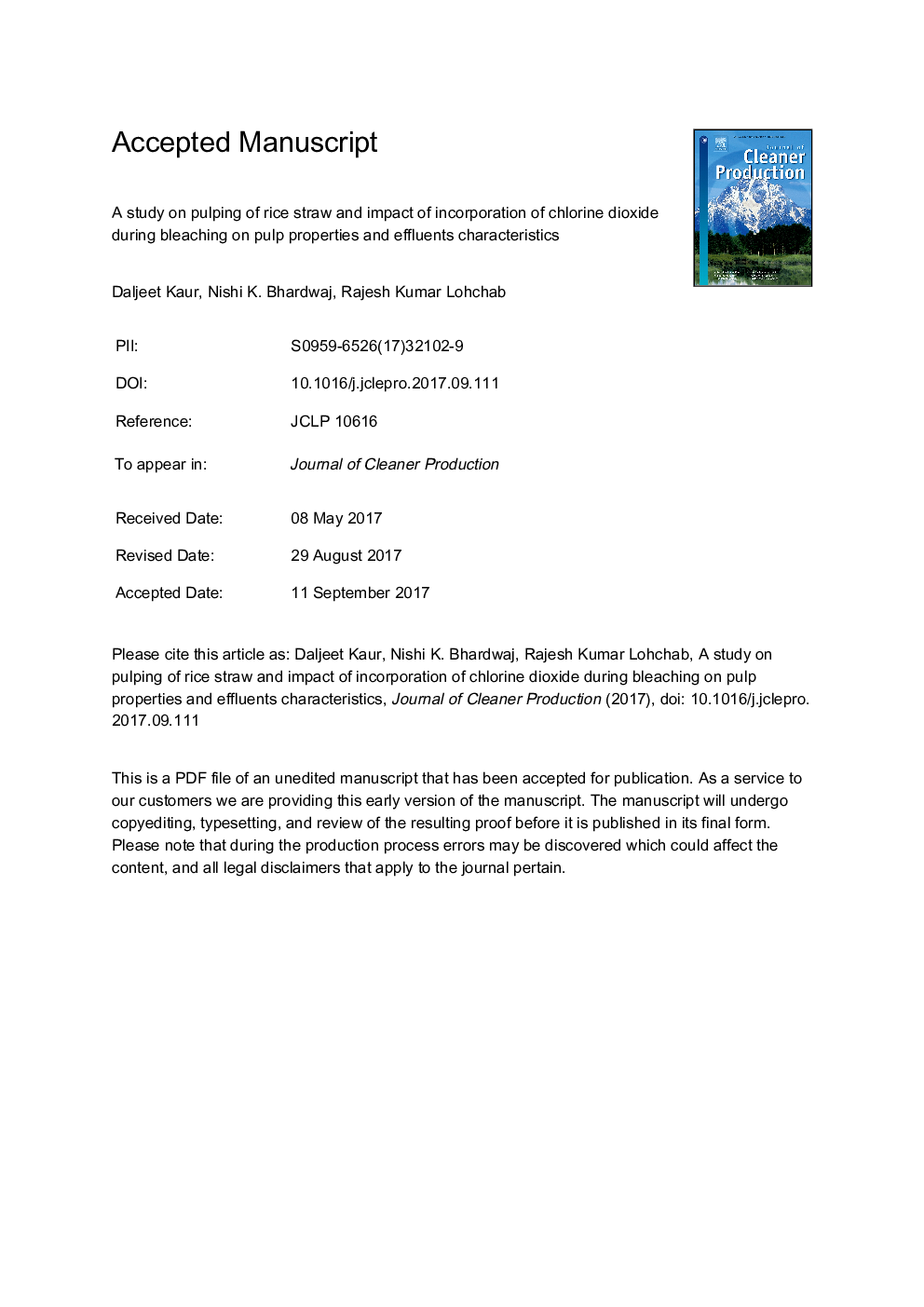| کد مقاله | کد نشریه | سال انتشار | مقاله انگلیسی | نسخه تمام متن |
|---|---|---|---|---|
| 5479206 | 1522084 | 2018 | 22 صفحه PDF | دانلود رایگان |
عنوان انگلیسی مقاله ISI
A study on pulping of rice straw and impact of incorporation of chlorine dioxide during bleaching on pulp properties and effluents characteristics
ترجمه فارسی عنوان
یک مطالعه در مورد پالپینگ کاه برنج و تاثیر ترکیب دی اکسید کلر در هنگام سفید کردن خواص خمیر و ویژگی های پساب
دانلود مقاله + سفارش ترجمه
دانلود مقاله ISI انگلیسی
رایگان برای ایرانیان
کلمات کلیدی
نی نی منابع جنگل، مدیریت زباله، پودر سودا، سفید کننده هالید های آلی قابل جذب،
موضوعات مرتبط
مهندسی و علوم پایه
مهندسی انرژی
انرژی های تجدید پذیر، توسعه پایدار و محیط زیست
چکیده انگلیسی
World is facing challenges to reduce global environmental issues including waste management, green house gas emissions, pollution, deforestation and depletion of non renewable resources originated due to speedy industrial and urban development. To protect environmental resources, strict legislations are being made by the governments of developing and developed world. Due to such issues, pulp and paper industry is sarcastically facing shortage of forest based raw materials for paper production. Most of the mills have either start up with non wood based raw materials or recycled papers in place of conventional forest based resources. Rice straw, a lignocellulosic residue is abundantly available in wood short countries like India and China and can be utilized in pulp and paper industry. In present study it was found that rice straw consisted of cellulose (33.3 ± 0.47%), pentosan (27.3 ± 0.36%), lignin (13.0 ± 0.07%), ash (12.6 ± 0.11%) and silica (11.7%). The higher amount of carbohydrates and less lignin content in rice straw in comparison to hardwoods and softwoods can be made as a alternate raw material for pulp and paper mills. Out of soda and soda anthraquinone - methods for converting rice straw to pulp, -Later was found to be a better option as it gives high pulp yield (62.4%) and better strength properties of the pulp. The bleaching of soda--anthraquinone rice straw pulp with chlorine dioxide based bleaching sequence was found better over elemental chlorine based sequence as it improved the pulp strength properties and reduced the bleaching effluent load. The adsorbable organic halides - indicative of biorefractory, accumulative and toxic compounds were reduced by 66% when chlorine dioxide bleaching was used. Such approach of using agricultural waste as a raw material for making paper can prove to be valuable towards waste utilization, pollution control and for sustainable growth of industry.
ناشر
Database: Elsevier - ScienceDirect (ساینس دایرکت)
Journal: Journal of Cleaner Production - Volume 170, 1 January 2018, Pages 174-182
Journal: Journal of Cleaner Production - Volume 170, 1 January 2018, Pages 174-182
نویسندگان
Daljeet Kaur, Nishi K. Bhardwaj, Rajesh Kumar Lohchab,
